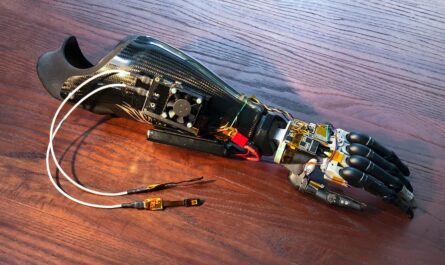
A stethoscope is arguably one of the most important diagnostic tools used by doctors. Invented in the early 1800s, the stethoscope has come a long way and is an indispensable part of every medical professional’s kit. Let’s take a deeper look at this wonder tool of the medical world.
History and Invention
The modern stethoscope was invented in the year 1816 by the French physician Rene Laennec at Necker Hospital in Paris. At that time, auscultation or listening to internal sounds of the body was done by placing one’s ear directly on the chest of the patient. However, Laennec found this practice culturally inappropriate for male physicians to examine female patients. To overcome this barrier, he rolled paper into a cylinder and placed one end against the chest and the other to his ear. This allowed him to listen to the heart sounds without direct contact. This early design proved very effective and helped improve diagnoses. Soon it evolved into the more familiar bell-shaped design we see today with improvements in acoustics and manufacture of materials.
Design and Functioning
A typical modern stethoscope consists of a binaural head and two tubes attached to a chest piece. The binaural head contains two hollow rubber tubes that fit snugly into the ears of the clinician allowing both ears to listen simultaneously. The dual lumens help filter out ambient noises for clearer auscultation. The chest piece is generally bell-shaped made of plastic, steel or rubber. It comes in various sizes suited for different body surfaces like the chest, back, heart etc.
When placed on the body, sound waves from the internal organs travel through the chest piece and air-filled tubes to reach the clinician’s ears. The bell amplifies and transmits the sounds to aid diagnosis. High-quality stethoscopes often use diaphragm chest pieces as well which pick up higher frequency sounds better than bells. Electronic digital stethoscopes are also gaining popularity as they can further amplify sounds and filter noises through integrated sensors and chips.
Uses in Diagnosis
The stethoscope is an extremely useful non-invasive medical tool for listening to internal bodily sounds and studying their patterns, intensities and timing. This aids in numerous diagnoses. The most common uses include:
– auscultating heart sounds to detect normal rhythms, murmurs or other abnormalities that may indicate conditions like heart defects, infections, valve issues etc.
– listening to breath sounds over the lungs helps detect abnormalities associated with conditions like pneumonia, chronic obstructive pulmonary disease, asthma etc. Abnormalities like crackles, wheezes or decreased air entry can provide valuable clues.
– assessing bowel sounds gives insights into gastrointestinal motility issues like constipation or bowel obstructions.
– auscultating over blood vessels helps identify bruits which could point to abnormalities like narrowing arteries.
– checking fetal heart sounds during pregnancy allows monitoring the heartbeat pattern and help detect complications if any.
Thus, through careful auscultation of numerous body areas, the stethoscope aids identification of a variety of medical conditions in areas like cardiology, pulmonology and gastroenterology. Its diagnostic power is immense.
Advancements and Modern Variants
Constant innovations over the past decades have led to improvements in stethoscope technology:
– Electronic stethoscopes digitalize sounds detected by the chest piece and transmit them through integrated headphones with better amplification and noise cancellation than acoustic scopes. Some advanced models come with recording options and attachment to computer programs for record-keeping and telemedicine.
– Dual-head stethoscopes contain two sets of ear tubes, chest pieces and eartips allowing simultaneous auscultation by two healthcare professionals for teaching purposes.
– Fetal stethoscopes feature shorter tubes and oversized chest pieces optimized for listening to fetal heart tones through the mother’s abdomen.
– Ear/concealed stethoscopes hide tubing inside the practitioner’s clothing with only the eartips visible, keeping both hands free.
– Antiseptic stethoscopes use specialized materials that can be wiped clean easily, critical in hospital settings.
– Color-coded scopes help differentiate stethoscopes used for pediatric patients from adults to avoid cross-contamination.
Increased research into acoustic technologies and new materials will likely lead to even more applications of the stethoscope in the future.
Conclusion
After two centuries of use, the humble stethoscope still remains of immense value to physicians globally. It has helped diagnose millions and will continue aiding healthcare owing to advancements. Though newer technologies supplement it, the cost-effective stethoscope allows non-invasive examination and auscultation skills remain valuable. Truly, this everyday tool deserves praise as one of the greatest medical innovations ever. With constant improvements, the stethoscope will endure as a mainstay of physical diagnosis and patient care.
*Note:
1. Source: Coherent Market Insights, Public sources, Desk research
2. We have leveraged AI tools to mine information and compile it


